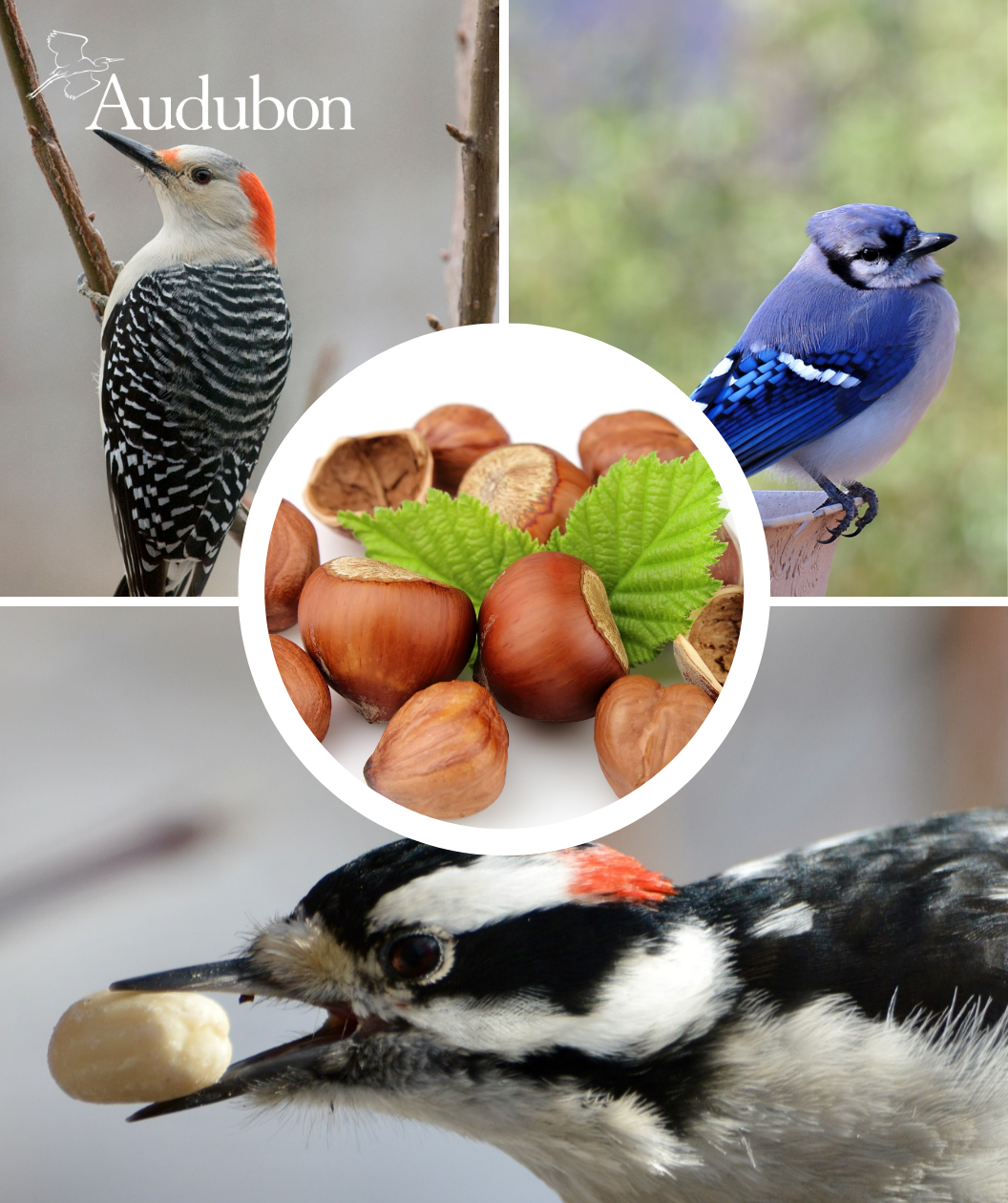





FEATURES:
May Benefit & Attract: Blue Jays, song birds, woodpeckers, bobwhite, pheasants, Ruffed Grouse, turkeys
- This bird-friendly native plant provides food and shelter for local and migrating birds and other wildlife
- All Audubon® branded trees and plants are grown 100% Neonic-free by Bower & Branch, making these plants safer for the birds and safer for the environment
- The National Audubon Society protects birds and the places they need, today and tomorrow
- Hand Selected, Fresh from the Grower
Growth Facts
- Hardiness Zone: 4-9
- Mature Height: 15-18' tall
- Mature Width: 10-12' wide
- Exposure: Full Sun/Part Shade
- Spacing: 10-12' apart
FEATURES:
May Benefit & Attract: Blue Jays, song birds, woodpeckers, bobwhite, pheasants, Ruffed Grouse, turkeys
- This bird-friendly native plant provides food and shelter for local and migrating birds and other wildlife
- All Audubon® branded trees and plants are grown 100% Neonic-free by Bower & Branch, making these plants safer for the birds and safer for the environment
- The National Audubon Society protects birds and the places they need, today and tomorrow
- Hand Selected, Fresh from the Grower
Growth Facts
- Hardiness Zone: 4-9
- Mature Height: 15-18' tall
- Mature Width: 10-12' wide
- Exposure: Full Sun/Part Shade
- Spacing: 10-12' apart
Why plant Audubon® Native American Filbert?
You may think that American Filbert would be a fine bird-attracting plant by virtue of its tasty nuts. And you would not be wrong—Blue Jays, woodpeckers, bobwhites, pheasants, Ruffed Grouse and turkeys do love them. But for songbirds, American Filbert offers something even better—in the form of caterpillars! According to entomologist and nature writer Douglas Tallamy, no food is more valuable to songbirds and their rapidly growing chicks than caterpillars, and American Filbert, he says, supplies around 130 species of them. Filberts, with their thickety growth habit, also provide protection from predators while the birds are foraging. A bird bonanza!
Native throughout the Midwest, Northeast, and Upper Southeast, American Filbert, a.k.a. American Hazelnut, is a common sight in much of the East. It grows in moist prairies and along streams, as well as on drier hillside sites and at the edge of woodlands. Throughout history, people have relished the nuts—when they can get to them before the birds and squirrels do! This nifty native has had a variety of other roles for humans, too. The Ojibwe once used the straight-growing branches as drumsticks. The wood has also been turned into charcoal for artists’ pencils.
How to use Audubon® Native American Filbert in the landscape?
Among the many caterpillars that American Filbert hosts are several large moth species that are truly spectacular, such as the Luna, Polyphemus, Cecropia, and Io moths. If they don’t end up as bird food, they make amazing backyard visitors.
Audubon® Native Plants & Trees
Audubon is devoted to protecting birds and the places they need, while Bower & Branch is devoted to the growth of true native trees and plants–no cultivars or hybrids. Together, we strive to unite communities in conservation and inspire individuals to cultivate a better world for birds starting in their own backyards, balconies, or patios. By guiding and recommending trees and plants truly native and beneficial to your region, we can really start to make a difference.
What is the definition of Native?
“In the United States, a native plant is defined as one that was naturally found in a particular area before European colonization. Native plants are the foundation of a region’s biodiversity, providing essential food sources and shelter for birds, especially those threatened by the changing climate. Since native plants are adapted to local precipitation and soil conditions, they generally require less upkeep, therefore helping the environment and saving you time, water, and money.” – The National Audubon Society
Learn how you can help birds in your home and community through Audubon’s Plants for Birds program.
Audubon® is a licensed and registered trademark of the National Audubon Society. All rights reserved.
Planting Zones
Hardiness Zone: 4-9
How To Plant Audubon® Native American Filbert
American Filbert will produce the most nuts and the brightest fall foliage (often a wonderful pumpkin-orange color) in full sun, although it also grows happily in part shade. It is not fussy about soils and can thrive in wet or dry conditions. American Filbert is a medium to fast grower, and it spreads by sending up suckers around the parent plant. You can remove these for a cleaner look, but birders will want to leave them in place for habitat. Invasive Japanese beetles can be a problem. Where infestations are heavy, they can skeletonize the leaves, though this will not kill the plant.
How To Fertilize
Incorporate Elements Starter Plant food granular form into the soil when planting. If planting in spring or summer, start fertilizing late fall using Elements Starter Plant food granular form on an annual basis each late fall. Continue this for the first three years to get your plant well established.





